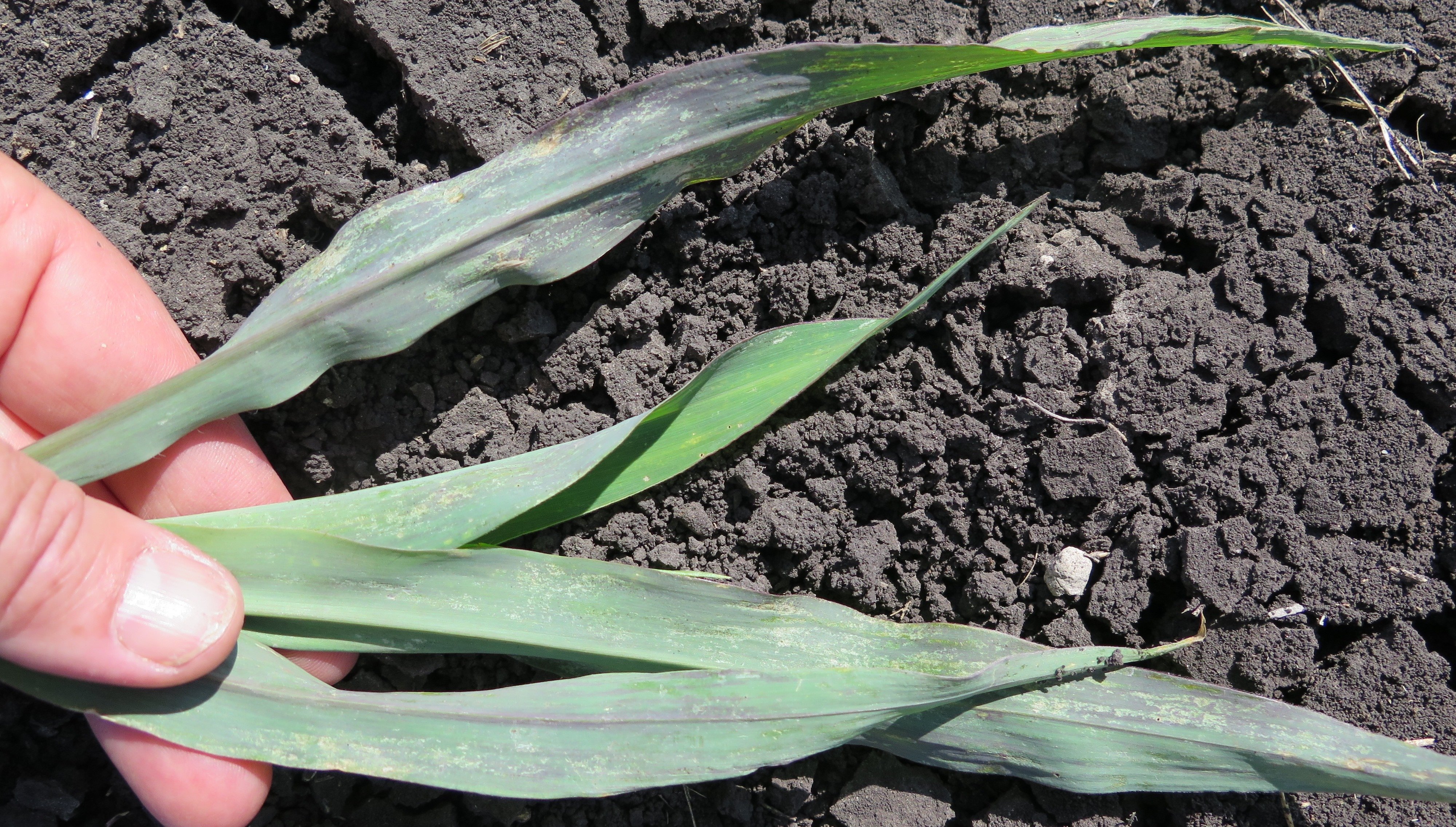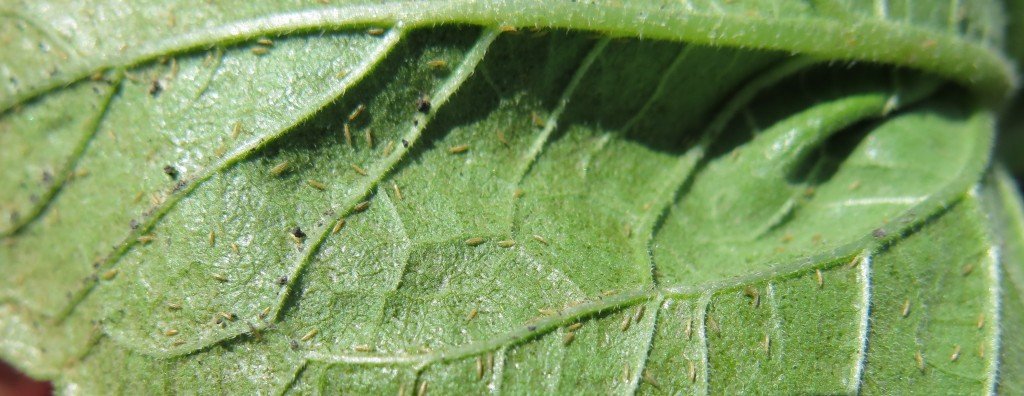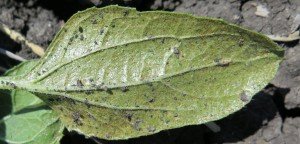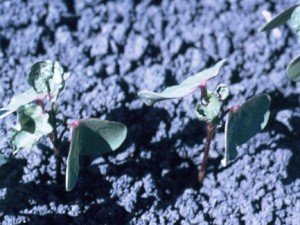Emerging and vegetative summer crops in close proximity to unharvested winter crop are at risk of thrip damage, but the damage is largely cosmetic and rarely warrants treating.
Thrips breed up in winter cereals, and particularly after rain, will move out of the winter crops in huge numbers. Most of you will be familiar with the joys of thrips biting you, and swarming around white vehicles and shirts as you check crops at this time of year.
Whilst thrip damage can look dramatic, it rarely results in any lasting impact on the crop. Typically, a crop that is actively growing (adequate water, warm weather, not waterlogged) will rapidly outgrow thrip damage. Seedlings that are growing more slowly because of dry conditions, waterlogging or disease will accumulate more thrip damage, particularly on older leaves and look unthrifty.
Key issues to consider in relation to thrip infestations in young summer crops are:
- Spraying to control thrips will kill thrip, but will not prevent rapid reinfestation
- If you have applied a treatment, and are seeing thrips again soon after, it more likely to be reinfestation than survival of insecticide resistant western flower thrip (Franklinella occidentalis).
- Thrips tabaci (tobacco thrip) and F. occidentalis are usually the most abundant thrip species at this time of year.
- Thrips will move from winter cereals and weeds into the summer crops in large numbers and potentially over several weeks.
- There are a number of predators such as pirate bug that feed on thrips, and these will be killed by any treatments applied to try and control thrip
- Insecticide seed dressings will kill thrips that feed on the plants, but because the thrips must feed to acquire a dose of insecticide, there will still be plant damage.
- The systemic insecticide will prevent thrips establishing in the summer crop (laying eggs and producing young).
- Thrips are useful predators in areas prone to spider mites
Thrips typically infest the undersides of leaves, piercing the leaf cells and sucking up the cell contents. As air enters the cells, they turn silvery. Some crops will also exhibit a bronzing in response to thrip feeding, and the leaf margins will also brown.
The following images show typical thrip damage symptoms to sunflower, maize and cotton.
For more information on thrip damage to cotton see the Cotton Pest and Beneficial Guide

Thrip damage to maize plant. Note the damage is cumulative, and therefore worse on the older leaves where the thrip have fed for longer.
For more information on thrip damage to cotton see the Cotton Pest and Beneficial Guide




